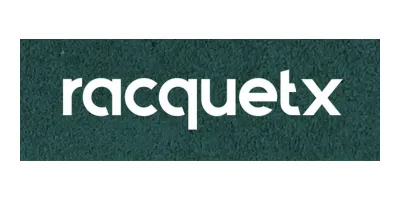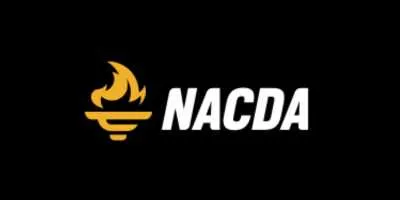Home » Sports Turf Irrigation » Golf Course Irrigation System Installation Considerations for Operators

The lush greens and meticulously maintained fairways of a golf course are not just a product of nature; they are the result of sophisticated irrigation systems that ensure the beauty and playability of the course. Golf course irrigation is a science that balances the needs of the turf with environmental conservation efforts.
This guide is meant for golf course operators and it explores the nuances of golf course irrigation systems, providing an in-depth look at their importance, components, design, and the intricacies involved in their cost and maintenance.
If you are currently planning to invest in a golf course irrigation system, try our sports field irrigation cost calculator to get a tailored cost estimate for your project.
Golf Course Irrigation Systems Explained
Irrigation represents the deliberate distribution of water across land, serving as an essential component in the upkeep of golf courses. It’s a critical practice that ensures the fairways and greens remain in pristine condition, providing an optimal playing surface for enthusiasts of the game.
Components
A golf course’s irrigation system is a crucial yet complex setup, essential for maintaining optimal turf conditions. For operators and managers, it’s vital to grasp how each part functions together to sustain the course.
The system’s heart lies in its pumps, which supply the necessary water pressure. consider the pump’s capacity to ensure it can handle the size of your course and the variability in elevation. Energy efficiency and reliability should also be top concerns.
The network of sprinklers then takes over, systematically distributing water over the course. There are different types of sprinkler heads designed for various areas of the course, like greens, fairways, or roughs. Some are stationary, while others can rotate to cover larger areas. Proper placement and spacing are key to efficient water usage and coverage. Overlapping spray patterns can ensure there are no dry spots.
Controllers are integral as well, managing the schedule and amount of water delivered to meet the turf’s needs without waste. Modern systems can be integrated with weather stations and soil moisture sensors to optimize watering schedules, conserving water and reducing costs. Look for controllers with intuitive interfaces for ease of programming and adjustments. Remote access via smartphones or computers can offer additional convenience.
Maintenance: Regular maintenance is essential to prevent breakdowns; this includes checking for leaks, monitoring pressure fluctuations, and servicing the pump according to the manufacturer’s recommendations.
Read more about different types of sports field irrigation systems in our separate article.

Golf Course Irrigation System Design Considerations
When planning to invest in an irrigation system for your golf course, it’s vital to understand the design process’s intricacies. A well-thought-out irrigation system design is not just about installing pipes and sprinklers but about building an efficient and sustainable system uniquely suited to your course’s environmental conditions.
Here are the key factors you, as a golf course operator, need to consider:
- Understanding Your Terrain: The design must account for the specific topography of your golf course. This includes elevation changes, types of greens, fairways, and roughs, as well as natural water flow patterns. The goal is to ensure that each area receives the right amount of water without causing runoff or pooling.
- Water Source Analysis: Assessing your available water sources (such as lakes, wells, or municipal supplies) is crucial. This will determine the system’s capacity and any treatment needed for the water before use. Consider the reliability and quality of your water source, as these will impact the long-term sustainability of the system.
- Efficient Water Distribution: The design should ensure that water is distributed evenly across the course. This involves calculating the right number and types of sprinkler heads, their placement, and the pipe layout. A good design minimizes water waste and ensures that every area, from greens to bunkers, receives adequate hydration.
- Sustainability Practices: With increasing environmental concerns, your design should incorporate sustainable practices. This can include using drought-resistant turf, rainwater harvesting systems, and incorporating technology that adjusts irrigation based on weather conditions and soil moisture levels.
- Integration with Existing Infrastructure: The design should complement and integrate smoothly with your course’s existing landscape and infrastructure. This includes considering the location of paths, trees, and other features that could affect the irrigation layout.
- Future-Proofing: As your golf course evolves, so too will its irrigation needs. Design your system with flexibility for future modifications or expansions. This might mean installing larger capacity pipes or planning for additional zones.
- Technical Expertise: Utilizing the skills of professional golf course irrigation designers or consultants is highly recommended. They bring the necessary technical knowledge and experience to create a system that is both effective and cost-efficient.
- Regulatory Compliance: Ensure that your design adheres to local water usage regulations and environmental guidelines. This includes obtaining any necessary permits before beginning installation.

The Cost of Golf Course Irrigation Systems
The cost of installing a golf course irrigation system can vary widely based on the size of the course, the complexity of the system, the type of equipment used, and the geographical location. Generally, the price range can be anywhere from $300,000 to over $3 million. Smaller courses might fall at the lower end of this range, while larger, more complex installations in premium locations could significantly exceed this estimate. Keep in mind that these figures are very approximate and can vary based on specific circumstances and market conditions.
Use our golf course irrigation cost calculator to get a customized estimate for your project.
Maintenance of Golf Course Irrigation Systems
For golf course operators, factoring in maintenance during the planning phase of an irrigation system installation is essential. Allocating a specific budget for ongoing maintenance should be a key component of your initial planning. This foresight ensures that you are prepared for the regular upkeep necessary to maintain the system’s efficiency and longevity.
Regular maintenance tasks, including inspections, repairs, and updates, are crucial for the system’s optimal performance. Having a dedicated budget for these tasks is critical.
The role of skilled technicians in providing professional oversight cannot be overstated. Their expertise is vital in maintaining the system, identifying potential issues early, and implementing necessary adjustments.
On average, the annual maintenance cost for a golf course irrigation system can vary widely depending on the size of the course, the complexity of the system, and local labor rates. However, as a rough estimate, you might expect to allocate anywhere from 1% to 3% of the initial installation cost annually for maintenance.
Professional Services and Support
For golf course operators planning to invest in an irrigation system, it’s crucial to understand the pivotal role of professional golf course irrigation companies at various stages of the project. These experts form the backbone of an efficient and effective irrigation system, ensuring its proper function from inception to maintenance.
Consultants
Professional consultants bring their specialized knowledge to the table. They assess the unique needs of your golf course, taking into account factors like terrain, water source, and environmental conditions. Consultants provide tailored advice and design recommendations that are essential for creating an irrigation system that optimally serves your course’s specific requirements
Certified Auditors
Certified auditors play a critical role in evaluating the efficiency and compliance of your irrigation system with industry standards. They conduct comprehensive assessments to identify areas of improvement, potential water conservation measures, and compliance with environmental regulations. Auditors ensure that your system operates at peak efficiency, minimizing resource waste and maximizing cost-effectiveness.
Installation Teams
When it comes to the actual installation of the irrigation system, professional installers are indispensable. Their expertise ensures that the system is implemented correctly, with attention to detail and precision. They follow the design plans meticulously, guaranteeing that every component functions as intended.
Maintenance Professionals
After installation, regular maintenance is essential to keep the system running smoothly. Maintenance professionals from golf course irrigation companies have the experience and knowledge to conduct routine inspections, perform necessary repairs, and make updates to the system. Their proactive approach ensures the longevity and efficiency of your investment.

Funding Options for Irrigation Systems
Securing the necessary funds for a new golf course irrigation system is a crucial aspect of the project’s planning. Here are some of typical sources of funding and financing strategies that Golf course operators have at their disposal to make this significant investment:
Banks and Financial Institutions
Many financial institutions specialize in providing loans or financing options tailored to golf course infrastructure projects, including irrigation systems. These lenders understand the unique needs of golf courses and can offer competitive interest rates and terms.
Grants for Water-Conservation Projects
Various government agencies and environmental organizations offer grants and incentives for water-conservation projects. Golf course operators can explore these opportunities to offset some of the costs associated with implementing an efficient irrigation system.
Read more in our sports facility grants and funding section.
Equipment Leasing
Leasing equipment can be a practical alternative for golf courses looking to spread the cost of their irrigation system over time. It allows operators to acquire the necessary equipment without the immediate financial burden of a large upfront payment.
Conclusion
For golf course operators embarking on an irrigation system investment, several key takeaways emerge. Firstly, understanding the importance of irrigation systems in maintaining pristine course conditions is paramount. The system’s components, including pumps, sprinklers, and controllers, work in unison to deliver precise irrigation, and energy efficiency should be a consideration.
Secondly, a well-thought-out design tailored to the course’s unique terrain and water sources is essential. Design elements like even water distribution, sustainability practices, and adaptability to future needs are crucial aspects.
Moreover, operators must budget for installation and ongoing maintenance, with annual costs ranging from 1% to 3% of the installation expense. Professional golf course irrigation companies offer valuable services throughout the project, from consultants and auditors to installation teams and maintenance professionals.
Lastly, funding options, including loans, grants, and equipment leasing, provide financial support for this significant investment, ultimately enhancing course playability and sustainability.
–—
Use our golf course irrigation system cost calculator to get a tailored cost estimate for your project in a matter of minutes!











